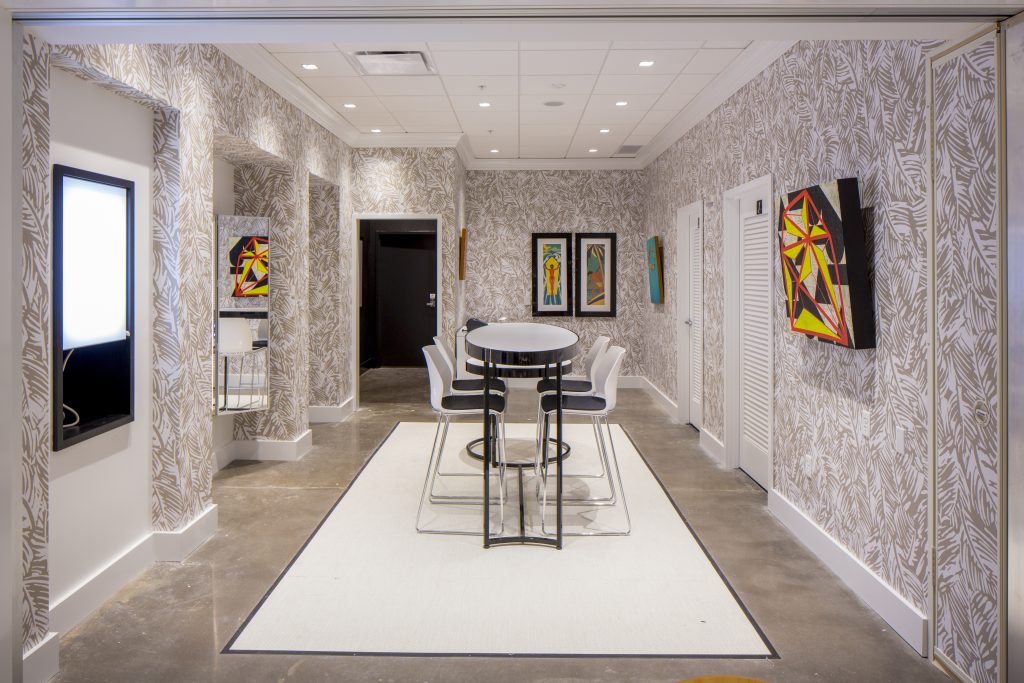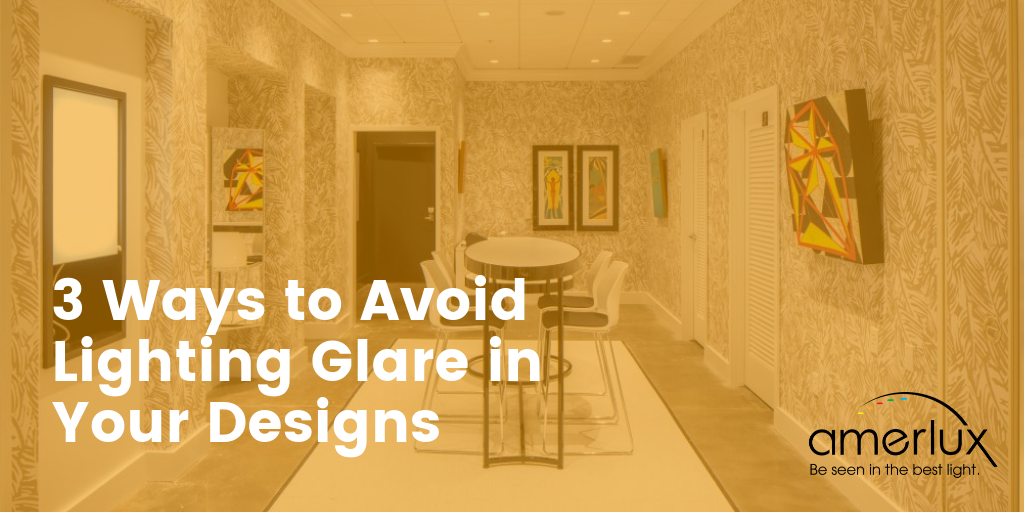3 Ways to Avoid Lighting Glare in Your Designs

Glare is a fact of life, as anyone who’s driven into the sun on their commute knows all too well. However, it’s important not to add to the sun’s naturally occurring glare when designing artificial lighting. When possible, it’s often necessary to reduce the sun’s glare too.
We know glare when we see it, but it’s not easy to define in technical terms. There are measurement systems like visual comfort probability (VCP) and the unified glare rating (UGR), but each of these has their limitations and none have gained universal support.
Glare can be divided into two main types: discomfort and disability. Discomfort glare comes from light sources that are painfully bright—like driving into the setting sun. With disability glare, vision is impaired from bright objects, but there isn’t necessarily discomfort. A bright light in a dark parking garage could cause disability glare because the light doesn’t hurt your eyes, but you can’t see very well with it shining in your face.
Definitions aside, glare is an annoying phenomenon and it’s important to think about it during the design phase of a project. With good design though, you can mitigate glare or even avoid it entirely.

1. Light in layers
For optimal room lighting, the design should start with the purpose of the space. What kind of work will be done in this room? Does the room need a certain mood or atmosphere? Rather than putting a gaggle of lights in the ceiling and moving on, light the room in layers—a layer of task lighting and then a layer of ambient lighting.
Task lighting can range from the specialty lamps over a dentist chair, to under shelf/cabinet lighting, adjustable desk lamps, as well as certain ceiling-mounted downlights. Whatever the light used, it should provide adequate light to accomplish the task and proper contrast levels—too much contrast and the shadows may interfere with the task and too little can make things illegible.
With the purpose of the room in mind, you can determine the best task lighting for it.
After the task lighting is set, you can add ambient lighting, which illuminates the architecture. This includes wall washers and indirect light fixtures that put a soft wash of light on the walls so the room doesn’t look like a cave.
Indirect lighting was an essential ingredient in this office renovation. Read the case study here.
The third layer, if necessary, is decorative and accent lighting to accentuate architectural features and add a touch of pizzazz to the room.
2. Not all lights should be downlights
Downlights can be very attractive, and they certainly are a simple way to light a space, but what downlights do best is lighting the floor and that’s the least important area to light. If there is a task to be performed in the space, using only downlights is typically a sub-optimal solution due to the glare and shadows they cast. Plus, without task lighting, the ceiling lights have to do a lot of work providing all of the illumination for the space.
With adequate task lighting in place, a nice way to raise the ambient light levels is with indirect lighting. Indirect lighting is very comfortable for human eyes and makes for pleasing aesthetics, especially in large commercial and office environments.
3. Shielding lights and shading the sun
The final step for eliminating glare are physical barriers between lights and people. For artificial lights, this is called shielding and consists of lenses, louvers, snoots and shields. These devices prevent the light from shining directly in people’s eyes, reducing the glare.
With the sun, it’s call shading and is just that—some kind of shade over the windows. While a building’s roof keeps the sun out most of the day, early morning and late afternoon can bring unwanted solar intrusion, making shades desirable.
Glare is a tricky phenomenon, but it doesn’t have to be inevitable in your buildings. Learn more about how you can use indirect lighting to reduce glare.

